London Risk Training Centre offers a comprehensive range of certifications and training programs, specifically Tier 1, Tier 2, and Tier 3, focused on “Lifting & Rigging.” These programs are meticulously designed by the experts at London Risk Training Centre Ltd., ensuring that participants gain the necessary skills and knowledge to excel in the field. The curriculum encompasses a wide array of topics tailored to meet the demands of different levels of expertise, making it suitable for both beginners and seasoned professionals. With a commitment to fostering a safe and environmentally conscious workplace, the courses empower individuals and organizations to implement effective health and safety practices. Enrolling in these programs not only enhances professional credentials but also contributes to creating a safer and more sustainable work environment
Level 1
Introductory level
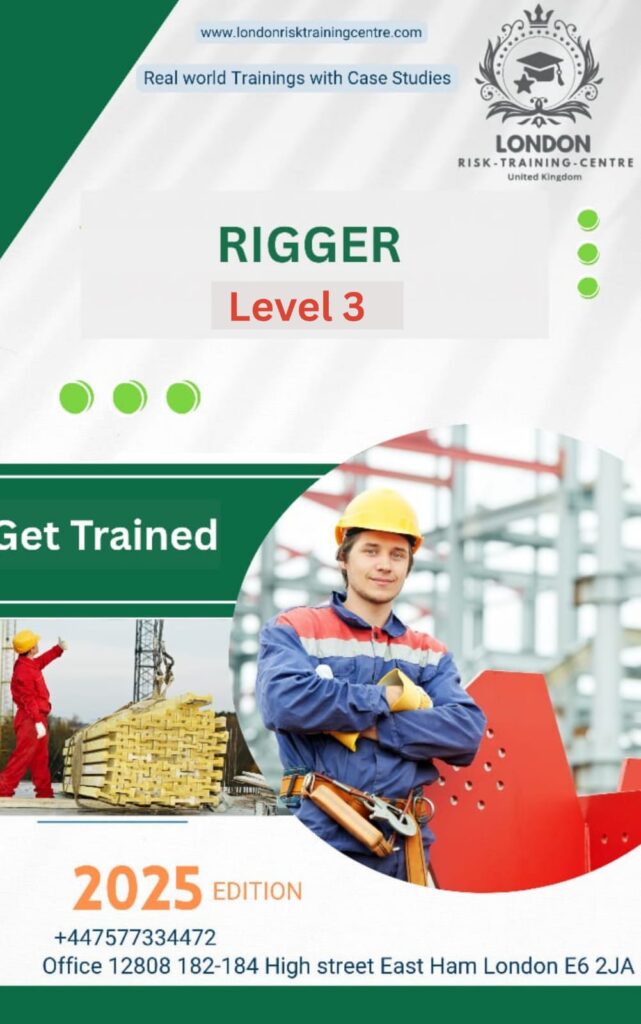
Rigger Level 3
This foundational course introduces participants to the essential skills and safety practices involved in basic rigging operations. It is designed for new entrants to the rigging profession, especially those supporting lifting operations under close supervision. The curriculum includes terminology, load weight estimation, hand signals, tag line use, sling selection, and basic inspection. Participants gain hands-on exposure to wire ropes, synthetic slings, and hardware like shackles and hooks. The course emphasizes understanding center of gravity, rigging angles, and load stability. Safety regulations, hazard identification, and accident prevention are also covered. Trainees learn to work in compliance with international safety standards and under the direction of senior riggers. This course prepares individuals for higher-level rigging responsibilities by establishing strong theoretical and practical foundations.
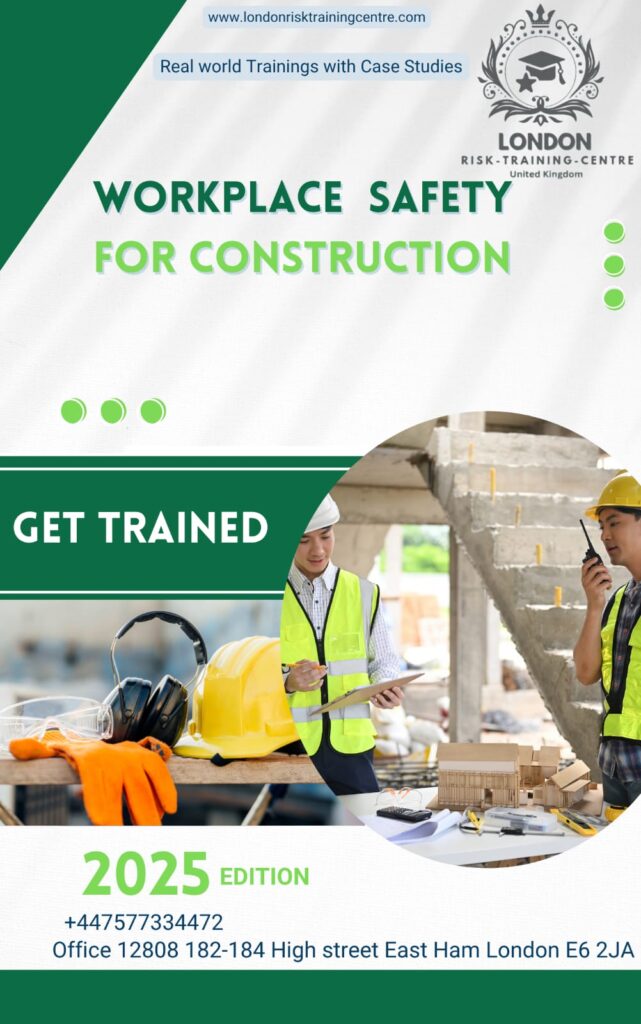
Workplace Safety for Construction Certification
This program equips workers with the fundamental knowledge and practices necessary for safe conduct in a construction environment. Topics include hazard identification, use of personal protective equipment (PPE), basic risk assessment, and workplace communication protocols. Participants are introduced to scaffolding safety, electrical hazards, fall protection, and housekeeping. The course explains emergency procedures, fire safety, and reporting incidents or unsafe conditions. Emphasis is placed on site orientation, toolbox talks, and safety signage. This training is ideal for new construction workers or those entering industrial sites. Upon completion, participants will be able to recognize unsafe behaviors and conditions, apply basic control measures, and contribute to a culture of safety and compliance

Manual Handling Training for Lifting Operations
Manual handling training focuses on safe practices for lifting, lowering, carrying, pushing, and pulling objects in lifting-intensive environments. Trainees explore body mechanics, injury prevention, ergonomic considerations, and safe load handling techniques. The course covers common risks associated with poor manual handling, such as musculoskeletal disorders. Real-life demonstrations and practical exercises help workers assess loads, choose lifting aids, and plan movements. Proper use of gloves, belts, and lifting equipment is emphasized. This course also introduces legal requirements for manual handling and documentation standards. Ideal for all personnel involved in rigging and lifting operations, this training ensures reduced injury risks and enhanced productivity..
Level 2
Intermediate Level
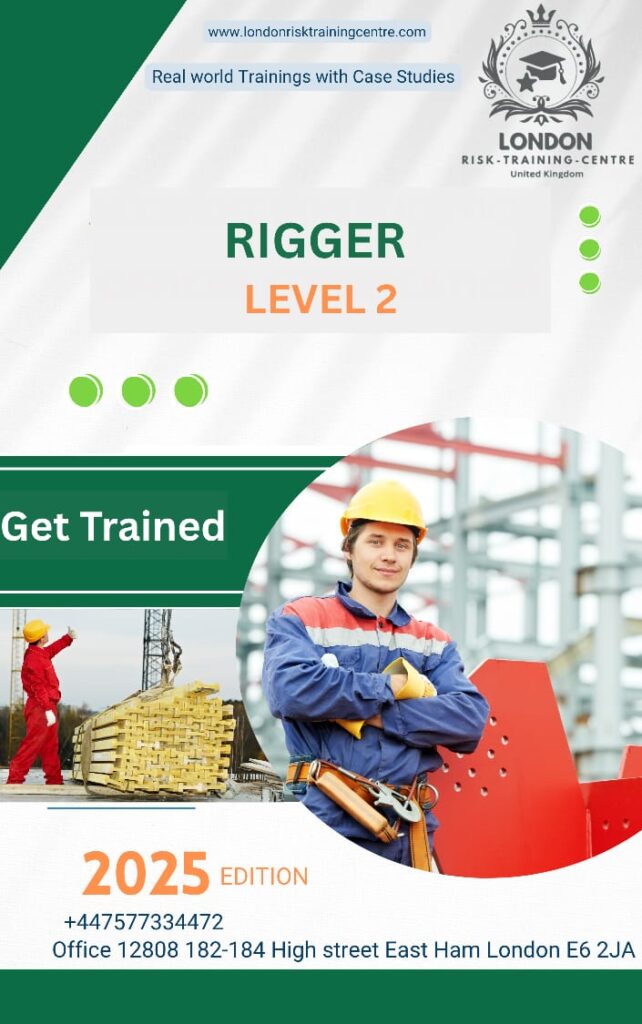
Rigger Level 2
This intermediate rigging course is designed for professionals who have completed Level 3 and seek to undertake more complex rigging tasks with minimal supervision. The curriculum builds upon basic rigging knowledge by introducing intermediate rigging techniques, load chart interpretation, rigging plan execution, and the handling of eccentric and multi-point loads. Trainees receive instruction in inspecting rigging gear for wear and damage, calculating sling angles, and rigging for special load types like cylindrical or irregularly shaped items. The course incorporates hazard analysis, job safety assessments (JSAs), and communication coordination among team members. Practical exercises involve load movement using chain blocks, hoists, and cranes under instructor guidance. Trainees learn the roles and responsibilities of signalers, slingers, and lifting supervisors. This course prepares candidates for supervisory roles and enhances their technical competencies in varied industrial settings.
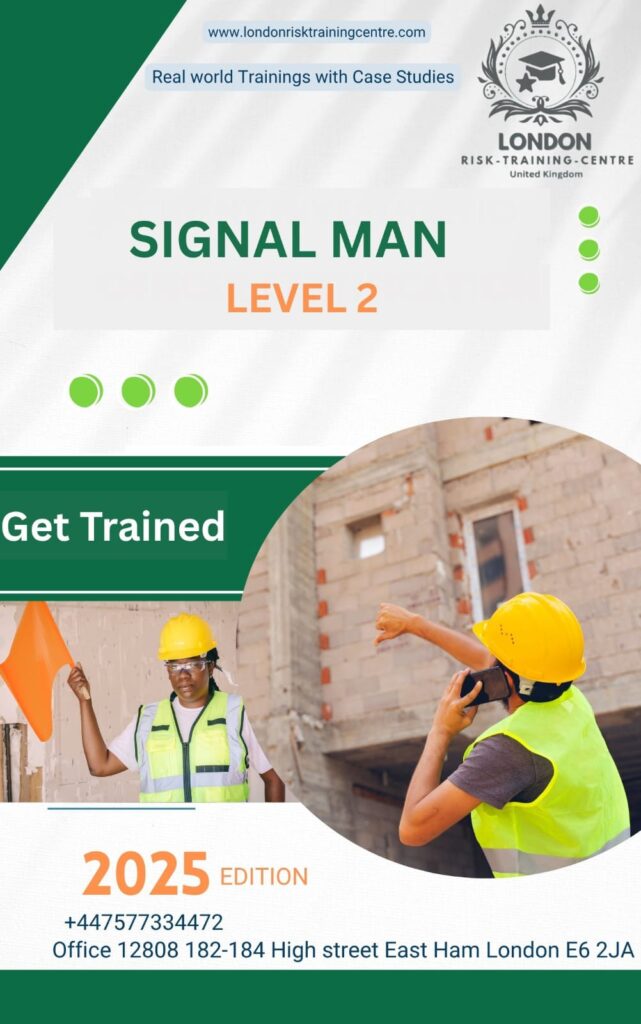
Signal Man Level 2
This course equips participants with advanced signaling techniques for safe crane and lifting operations. Signal men act as the vital communication link between crane operators and rigging teams. The course focuses on industry-standard hand signals, radio communication, and emergency stop protocols. Trainees learn how to assess site conditions, interpret lift plans, and signal from various positions. Emphasis is placed on visibility, coordination with multiple cranes, and working in confined or blind spots. Real-world scenarios and simulations are used to reinforce communication under pressure. The course also covers regulatory standards and the responsibilities of signal men in accident prevention and legal compliance. This training is essential for anyone supporting crane operations in complex environments.

Banks Man Level 2
This training prepares individuals to guide vehicles and mobile equipment safely around construction and industrial sites. Banks men are crucial in controlling movement where visibility is restricted. The course covers signaling techniques, route planning, risk assessments, traffic management, and pedestrian safety. Learners practice guiding reversing vehicles, coordinating with drivers, and using communication devices. The course includes theoretical components on blind spot recognition, spotter placement, and legal responsibilities. Participants also study case histories of site accidents involving vehicle movement to understand the importance of their role. This qualification is suitable for those working in busy logistics, construction, or warehouse environments.
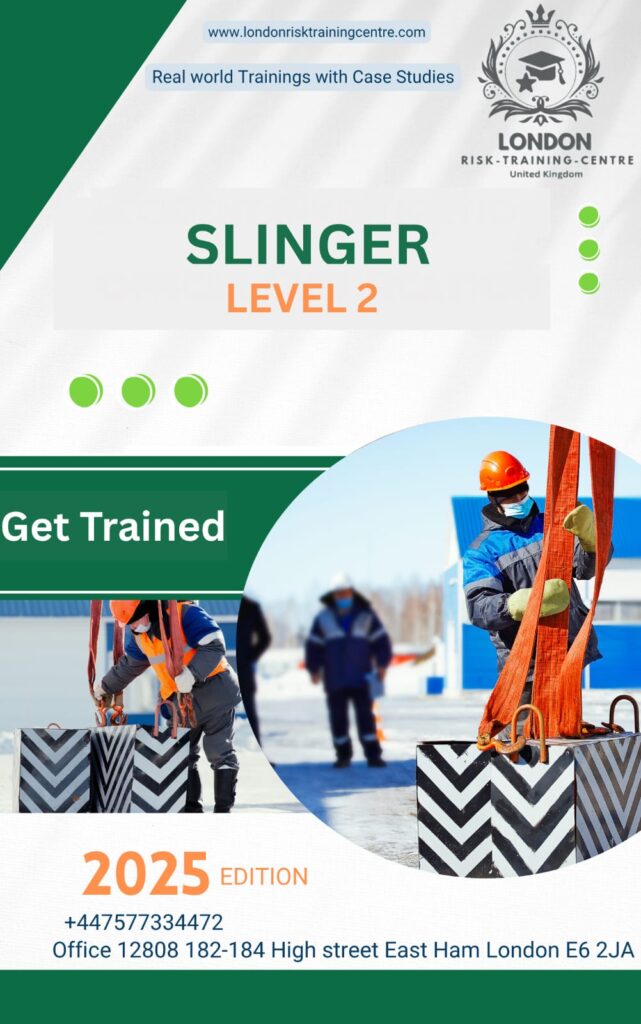
Slinger Level 2
The slinger role is vital for ensuring loads are securely prepared for lifting. This course trains participants in selecting appropriate lifting accessories, conducting pre-use inspections, and attaching/detaching loads in accordance with safety regulations. Learners explore lifting point selection, balance control, and tag line use. Case studies and simulations help in understanding dynamic loading, wind effects, and movement risks. Participants also receive training in teamwork coordination, voice and signal communication, and documentation of sling usage. Special attention is given to inspecting damaged slings, hooks, and lifting eyes. This course is suitable for those who serve as slinger signallers on construction and industrial sites.
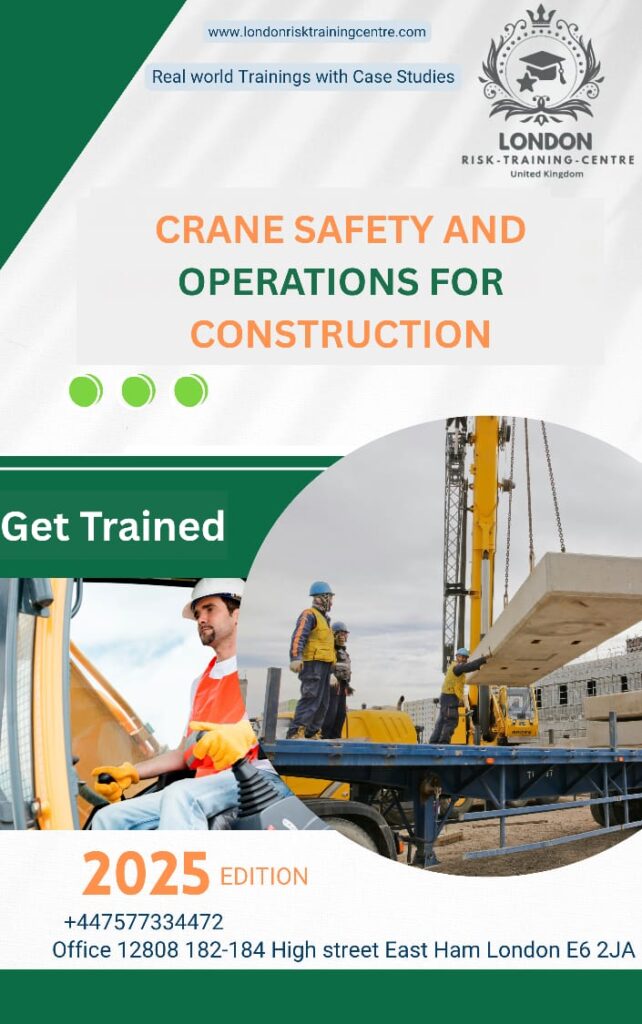
Crane Safety and Operations for Construction
This course introduces the safe operation and inspection of mobile and tower cranes in construction environments. Participants study crane types, capacities, stability factors, and ground conditions. They learn about counterweights, outriggers, boom extensions, and load radius calculations. Trainees are introduced to lift planning, risk assessments, and the roles of crane operators, riggers, and signalers. Mechanical and hydraulic systems, emergency procedures, and environmental factors such as wind and rain are also covered. Learners receive practical instruction on operating cranes under supervision in simulated work scenarios. The course promotes safe lifting practices and helps meet compliance requirements for crane operations.
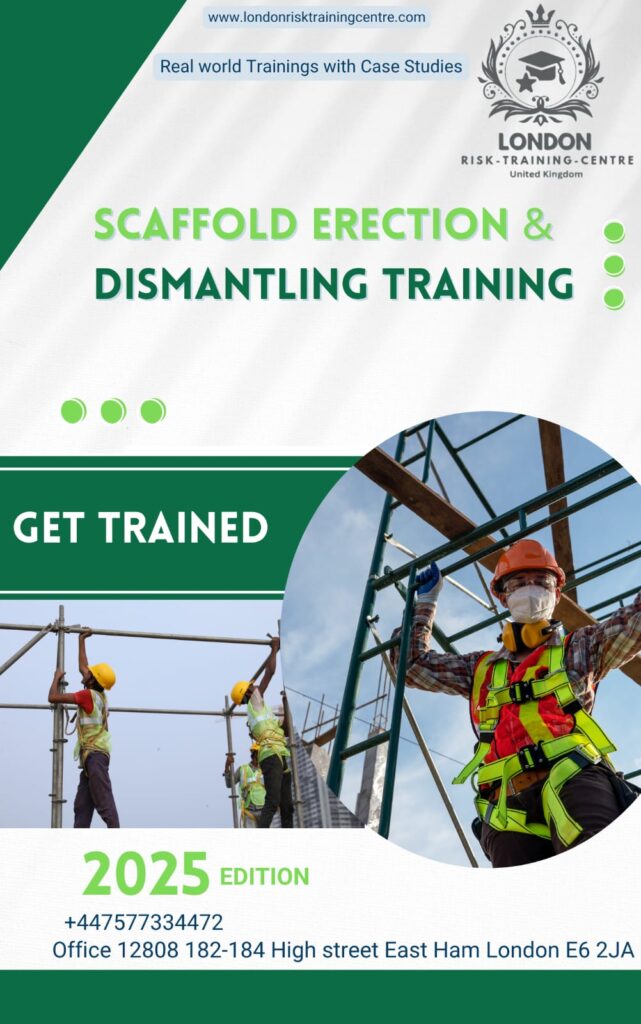
Scaffold Erection and Dismantling Training
This course prepares personnel to safely erect, modify, and dismantle scaffolding in compliance with international safety standards. Participants learn to interpret scaffold drawings, identify scaffold components, and perform stability checks. The course includes fall protection systems, tie-in procedures, bracing, platform assembly, and ladder access requirements. Hands-on training involves constructing frame, system, and tube-and-coupler scaffolds under controlled conditions. The course emphasizes safety risk assessments, load limits, inspection routines, and weather considerations. Suitable for construction personnel involved in access work, this course helps prevent collapses, falls, and non-compliance issues in scaffold management
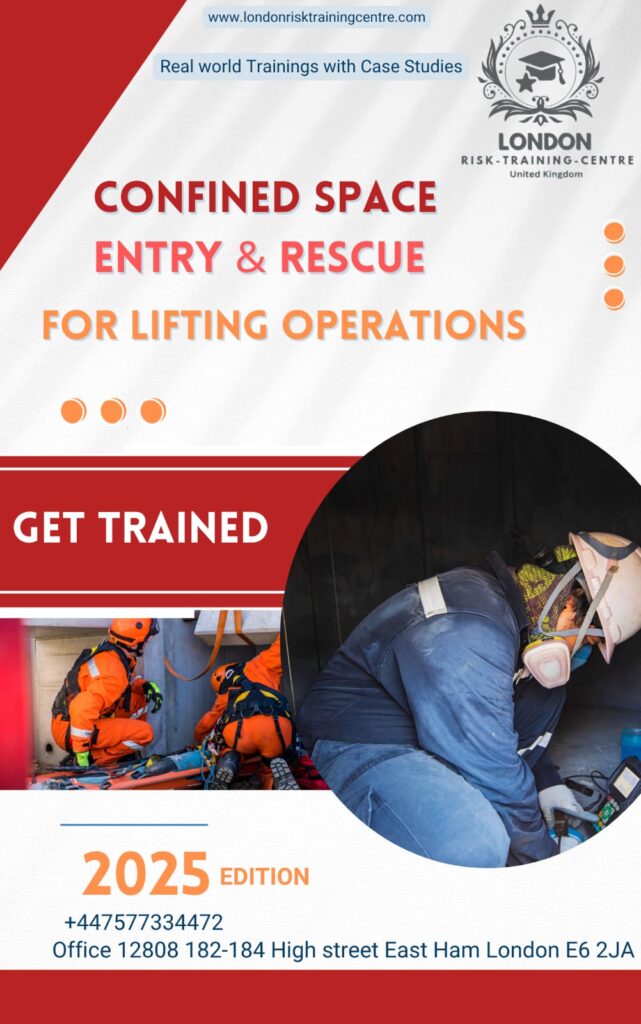
Confined Space Entry & Rescue for Lifting Operations
This course focuses on the specific risks and procedures for lifting tasks conducted in or near confined spaces such as tanks, silos, tunnels, and pits. Topics include confined space classification, gas detection, ventilation, entry permits, and hazard controls. Trainees practice the use of harnesses, retrieval systems, and breathing apparatus. The course also includes confined space rescue planning, roles of standby personnel, and emergency response protocols. Emphasis is placed on communication, teamwork, and compliance with confined space regulations. Ideal for riggers, rescuers, and supervisors involved in complex lifting inside confined areas.
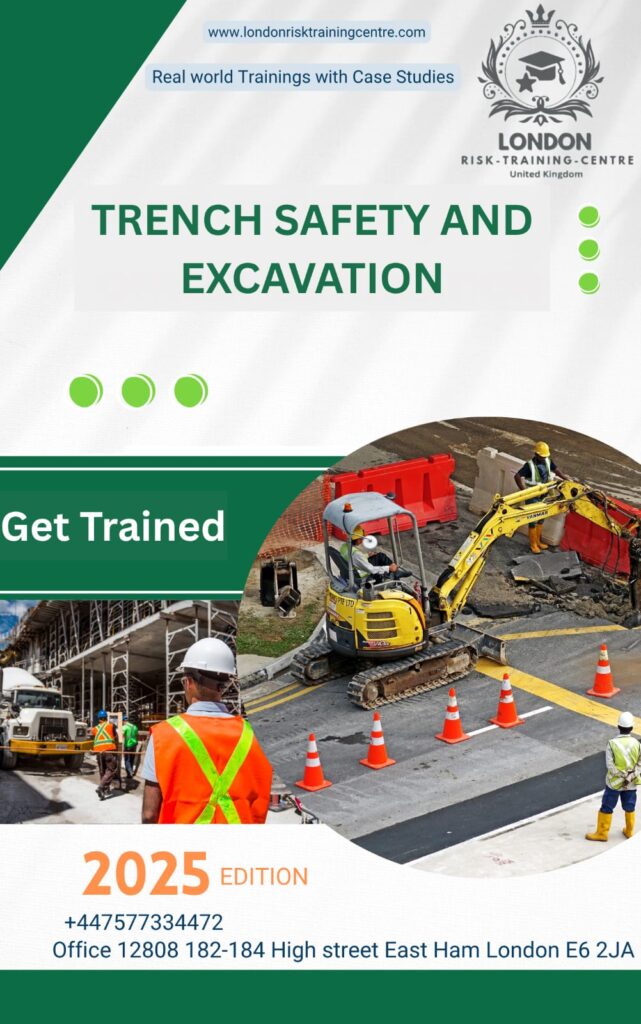
Trench Safety and Excavation Certification
This course trains workers and supervisors on safe excavation and trenching practices in construction and utility projects. Key topics include soil classification, shoring and shielding systems, sloping requirements, and protective measures. Trainees learn to identify hazards such as cave-ins, water accumulation, gas buildup, and falling loads. The course introduces trench inspection procedures, barricading, access/egress, and use of trench boxes. Practical demonstrations show how to implement safety measures in live trench environments. This course ensures compliance with excavation standards and reduces risks of fatalities associated with trench work.
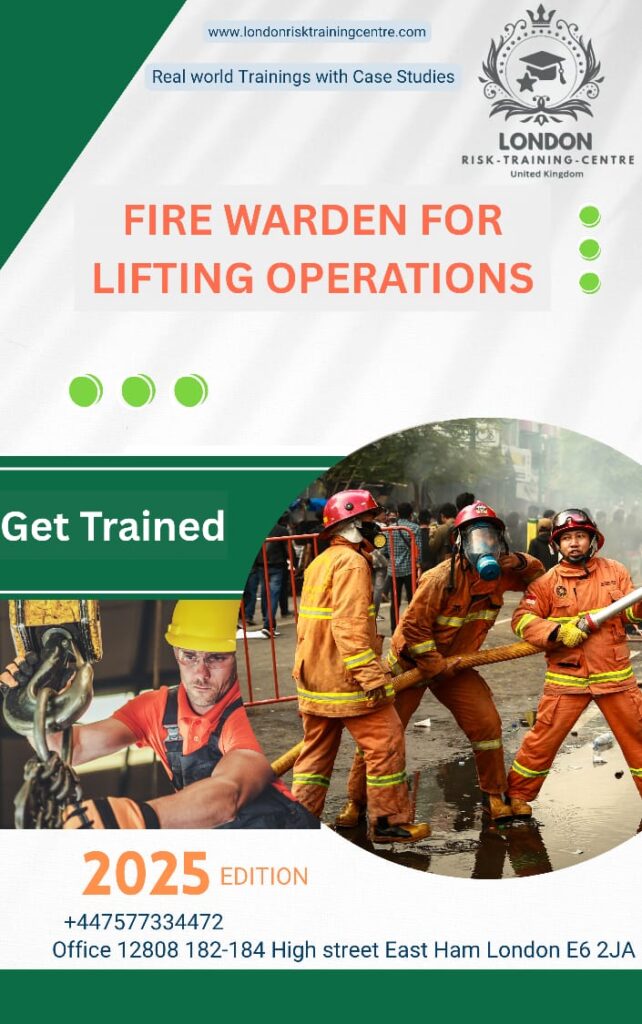
Fire Warden for Lifting Operations
This specialized fire safety course focuses on the responsibilities of a fire warden in environments involving rigging and lifting. Trainees learn fire prevention strategies, combustible material handling, and emergency evacuation coordination. Topics include the chemistry of fire, classes of fire extinguishers, hot work permit systems, and emergency drill management. Participants are trained to identify fire hazards, use extinguishing agents, assist in site evacuations, and communicate with emergency responders. Special attention is given to managing fire risks associated with lifting equipment and fuel-powered machinery. This certification strengthens workplace emergency preparedness and response.
Level 3
Advanced Level
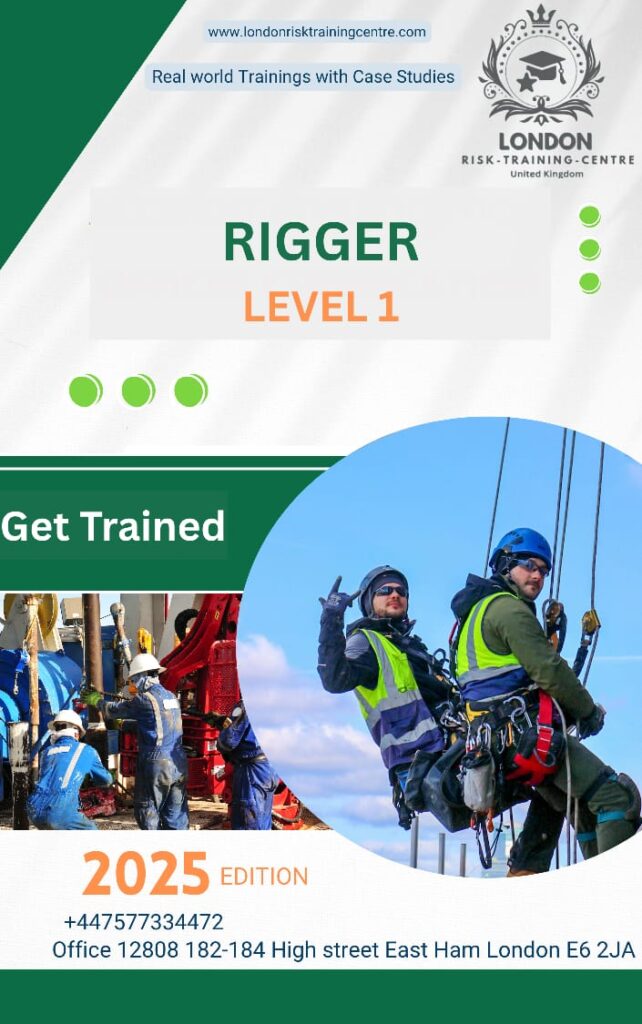
Rigger Level 1
This advanced-level training program is designed for highly experienced riggers who are responsible for planning and executing complex lifting operations. The course focuses on advanced rigging theory, including load dynamics, center of gravity shifts, and multi-crane lifts. Trainees master the use of specialized rigging hardware such as spreader beams, lifting lugs, turnbuckles, and snatch blocks. The curriculum emphasizes lift plan development, critical lift procedures, load path evaluation, and safety margin calculations. Candidates engage in scenario-based exercises involving unusual or non-standard loads. They also learn how to conduct advanced rigging inspections, lead rigging crews, and implement safe systems of work. This course aligns with global best practices and prepares candidates for supervisory and lead rigger roles in high-risk sectors such as petrochemicals, offshore, and heavy industry.
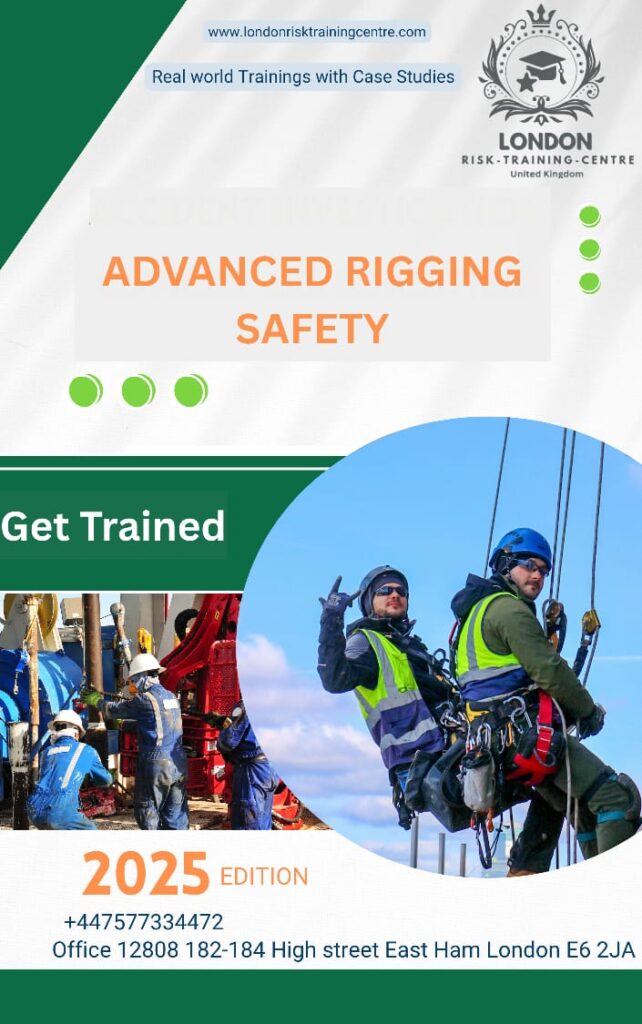
Advanced Rigging Safety
This specialist course is designed to elevate the technical and safety expertise of experienced rigging professionals. It covers advanced topics such as rigging for tall structures, high-tension environments, and variable load centers. Participants analyze case studies of rigging accidents to identify root causes and implement safety improvements. The course delves into engineering concepts like vector forces, load shift management, and moment arm effects. Trainees receive instruction in rigging automation systems, dynamic load controls, and wind resistance mitigation. Practical modules include tandem lifts, multi-leg rigging challenges, and rigging under live power lines or rotating equipment. Legal compliance, safety auditing, and leading risk assessments are key components. Ideal for those involved in critical lift planning or acting as senior rigging consultants or supervisors.

Rig Safety Supervisor
This course prepares seasoned riggers and field supervisors for overseeing the safe execution of rigging and lifting operations across industrial environments. It includes training in regulatory frameworks, safety leadership, incident investigation, and safety system implementation. Supervisors learn to conduct audits, verify lifting plans, lead safety briefings, and coordinate emergency response drills. The course covers behavioral safety, conflict resolution on job sites, and effective communication with crane operators, slingers, and signalers. Real-world scenarios teach supervisors how to recognize early warning signs of unsafe practices and respond decisively. Participants are trained to develop site-specific lifting safety plans, mentor junior riggers, and maintain documentation for legal and regulatory compliance. This course is essential for those responsible for leading multi-disciplinary lifting teams..
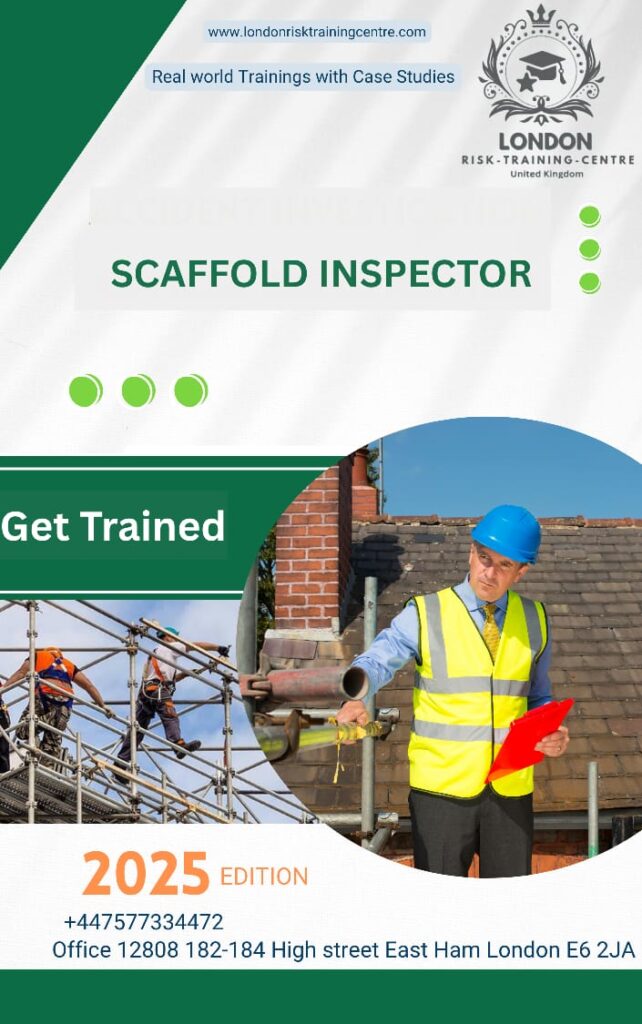
Scaffold Inspector Certification
This advanced program is intended for personnel responsible for inspecting scaffolding structures on construction and industrial sites. The curriculum trains candidates to identify compliance with scaffold erection standards, verify load ratings, and detect structural weaknesses. Topics include advanced inspection techniques for tube-and-coupler, system, and suspended scaffolds. Participants study corrosion patterns, foundation stability, bracing integrity, platform loading, and anchor point adequacy. The course emphasizes record-keeping, digital inspection checklists, tagging systems, and audit trails. Participants also learn to assess risk associated with wind loads, structural vibration, and adjacent work activities. Trainees engage in field inspections and defect reporting exercises. This certification is critical for construction managers, safety officers, and access safety auditors.
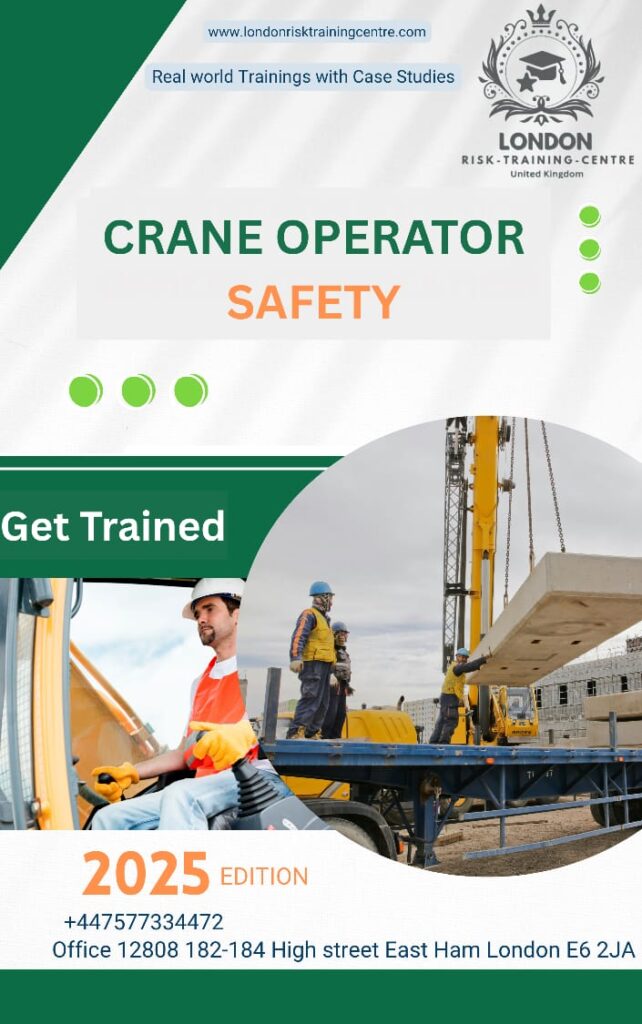
Crane Operator Safety Certification
This professional certification provides in-depth instruction for certified crane operators to master crane safety across a wide range of site conditions and lift types. The course reviews complex lifting operations, load chart analysis, boom angle and radius effects, and crane configuration optimization. Operators receive advanced training in communication protocols, site assessment, and terrain-based risk management. Focus is placed on managing lifts in confined spaces, near power lines, and in adverse weather conditions. Trainees undergo practical sessions on load manipulation, emergency shutdown, and recovery techniques. The course also covers compliance with local and international crane operation standards. Ideal for mobile, tower, and overhead crane operators working in high-risk, high-load environments.
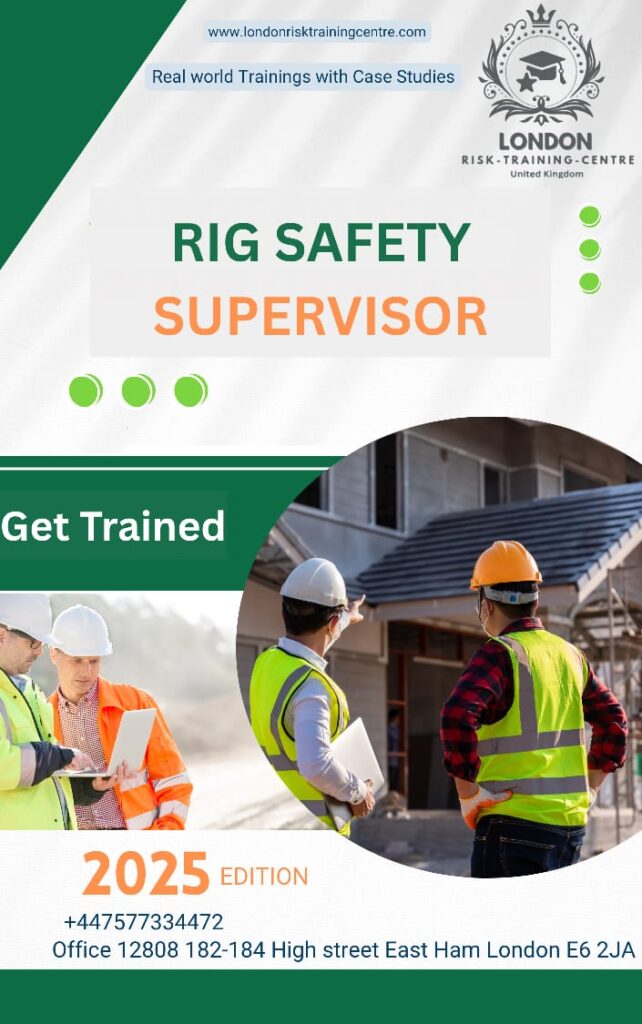
Rigging Safety Supervisor Certification
This leadership-level course is designed for professionals managing the planning, execution, and safety oversight of complex rigging operations. The training focuses on organizational risk management, crew supervision, and compliance enforcement. Participants study case law, safety codes, lifting team dynamics, and contractor management strategies. The course includes modules on safety planning for multi-crane lifts, high-angle rigging, offshore rigging scenarios, and emergency response integration. Supervisors learn to implement permit-to-work systems, coordinate hazard assessments, and manage documentation workflows. They also develop leadership skills for resolving safety conflicts and improving site culture. This certification qualifies graduates to act as senior safety personnel or rigging operations managers in complex industrial settings.